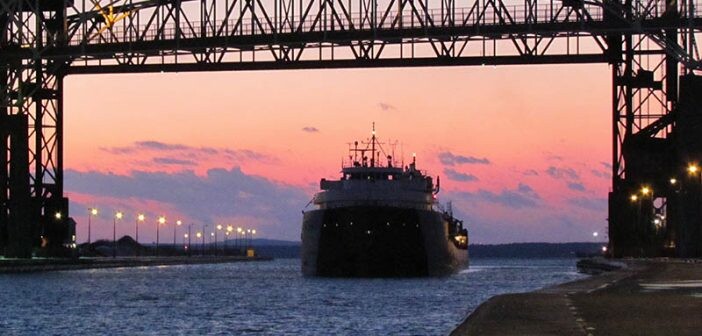On Aug. 30, the U.S. Coast Guard (USCG) published a Notice of Proposed Rulemaking (NPRM) in the Federal Register outlining pilotage rates for the U.S. Great Lakes pilotage system for the 2023 shipping season. The agency has requested public comment on its proposed rates, which seek to generate revenue by implementing hourly charges for pilotage services according to geographic area. By publishing proposed rates each fall, the Coast Guard hopes to have them finalized by the beginning of the next shipping season.
By law, ocean-going vessels operating on the Great Lakes are required to engage the services of both U.S. and Canadian marine pilots to assist with navigation. U.S. pilotage services in the Great Lakes are provided by three private pilot organizations whose services and fees are regulated by the U.S. Coast Guard.
The American Great Lakes Ports Association (AGLPA) has historically had a strong interest in both the cost and reliability of Great Lakes pilotage services due to its impact on the efficiency and competitiveness of Seaway commerce.
The Coast Guard proposes to increase the overall cost of U.S. Great Lakes pilotage in 2023 compared to 2022. Specifically, the agency seeks to generate $37,022,395 in revenue in 2023, compared to their target of $32,486,995 in 2022 — an increase of $4.535 million. The 14% increase is attributed to inflation and the addition of four new pilots. In 2023, the USCG is proposing a total workforce of 55 fully registered U.S. pilots and seven apprentice pilots.
The Coast Guard will be increasing individual pilot compensation from the current level of $399,266 annually to a new high of $422,336 annually.
The recent history of pilotage cost increases is detailed below.
(year / pilot #s / total est cost / % over prior year)
2014 / 36 / $12,889,868
2015 / 36 / $15,451,455 / +20% over 2014
2016 / 37 / $19,103,678 / +24% over 2015
2017 / 45 / $22,326,381 / +14% over 2016
2018 / 49 / $25,156,442 / +12.7% over 2017
2019 / 51 / $27,988,185 / +11.3% over 2018
2020 / 52 / $28,268,030 / +1% over 2019
2021 / 55 / $30,332,652 / +4% over 2020
2022 / 56 / $32,486,995 / +12% over 2021
2023 / 55 / $37,022,395 / +14% over 2022
It is important to remember that the Coast Guard’s annual rate setting process is a hypothetical exercise. It seeks to estimate the overall revenue and hourly charges necessary to operate the three U.S. pilot associations. Real world revenue generation will be impacted by traffic levels and business trends, which sometimes vary from the Coast Guard’s estimates.
AGLPA will be submitting comments on this proposed rule in coordination with other allied industry stakeholders.




